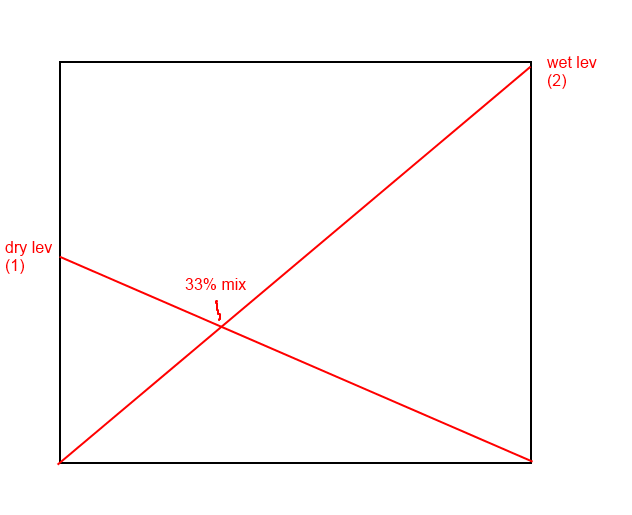guitarnerdswe
Fractal Fanatic
This is something I've been struggling with for many years. Namely, the panning law in the Axe. In "my perfect world", there wouldn't be any volume difference when using something like the stereo spread parameter to switch an effect from stereo to mono. Right now, when I turn my rotary (as an example), the signal gets louder. Not an issue when running 100% wet, just turn down the block level to compensate. BUT, if I want a 50/50 mix of dry and wet signal, this becomes a challenge. I've long wished for a panning law parameter for stereo effects, but that might be a wish list item to revisit.
Anyway, I seem to remember a formula to calculate an equal mix between 2 signals with different volume levels. I can't find it anymore, must have been on the old wiki or old forum. Does anybody remember it? In this exempel, if we know that the wet signal is 3 or 6 dB louder than the dry signal (actually don't know which in this case), how do I calculate which mix value yields equal volume level between dry and wet?
Cheers!
Anyway, I seem to remember a formula to calculate an equal mix between 2 signals with different volume levels. I can't find it anymore, must have been on the old wiki or old forum. Does anybody remember it? In this exempel, if we know that the wet signal is 3 or 6 dB louder than the dry signal (actually don't know which in this case), how do I calculate which mix value yields equal volume level between dry and wet?
Cheers!


